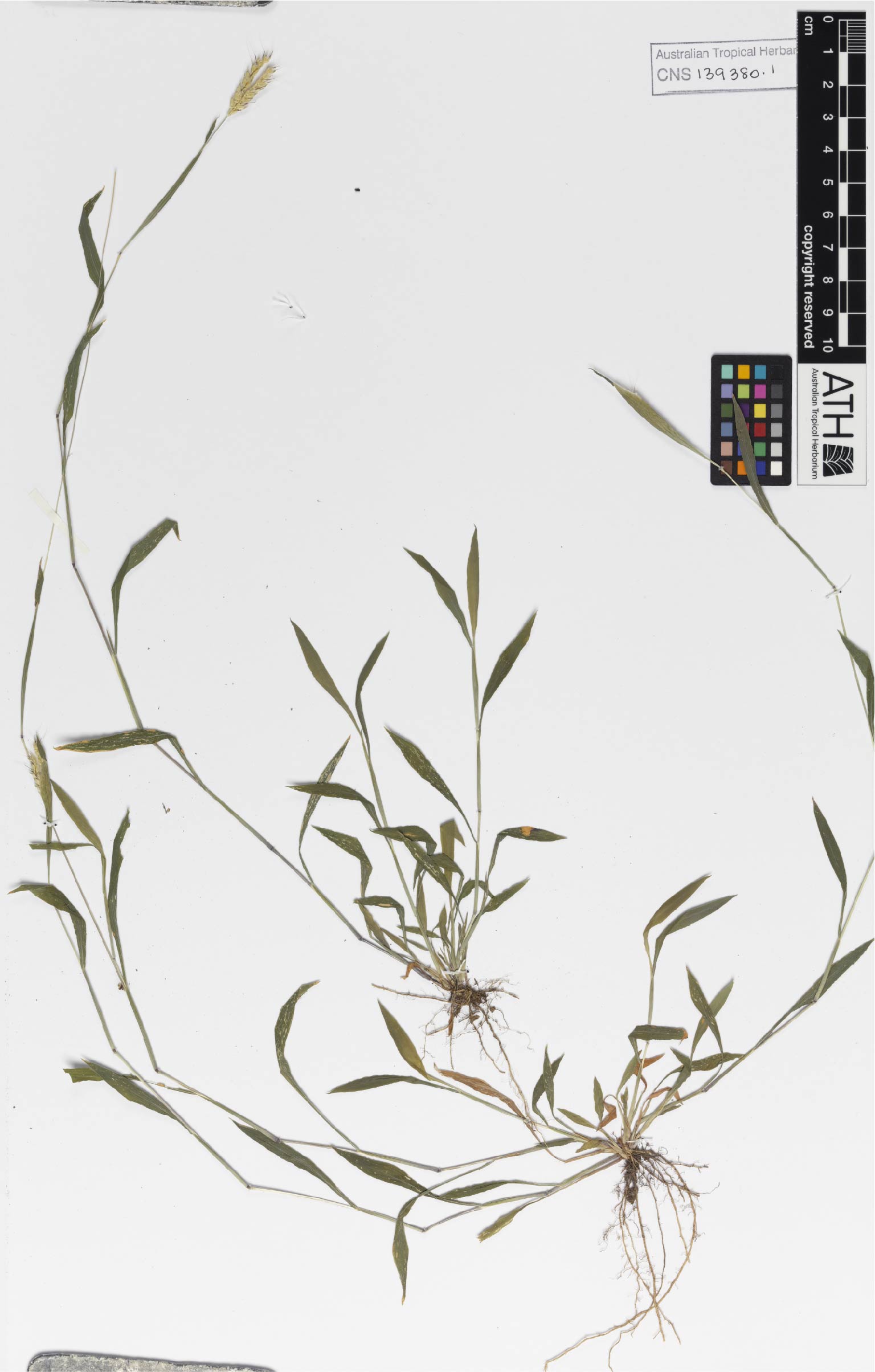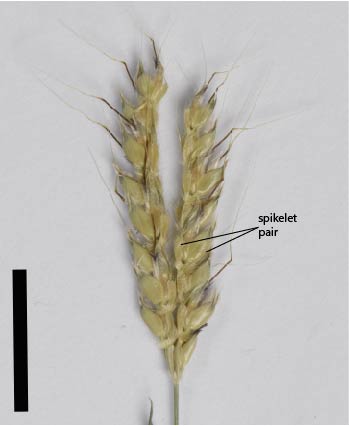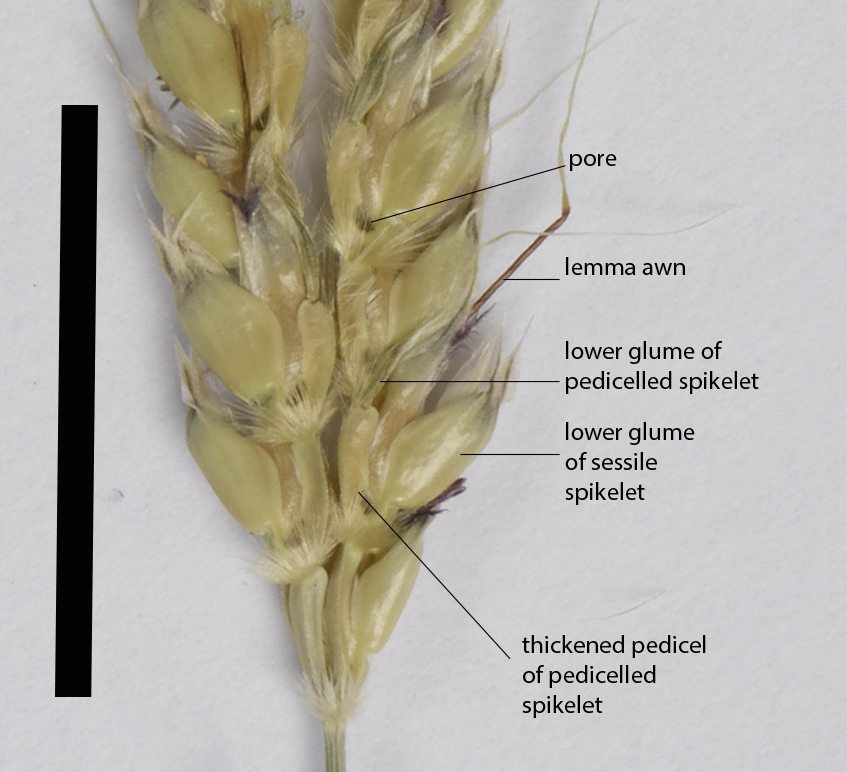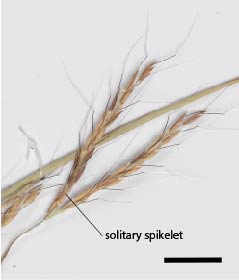Ischaemum decumbens
Benth
This species is an annual grass, usually sprawling from the centre but becoming erect up to 40 cm tall. The leaves arise along the stem (cauline) with leaf blades between 1-5 cm long and 1-6 mm wide and hairy (Fig. 1). The basic flowering units or spikelets are arranged along a spike like branch or raceme, the flowering head consisting usually of two branches arranged opposite each other (Fig. 2). The flowering heads are either exserted from the leaves or are sometimes partially enclosed by the leaf sheath (that part of the leaf which clasps the stem). The spikelets are arranged along the branches in pairs of one large stalkless (sessile) spikelet and one smaller stalked spikelet (Fig. 3). The stalks are thick to club-shaped and the arrangement of the stalk and the adjacent spikelet forms a pore like cavity between the sessile spikelet and stalked spikelet (Fig. 3). The spike will break apart at maturity between pairs of spikelets. Sessile spikelets are awned, the awn is 12-16 mm long, is twisted and bent and arises from the lemma.
Botanical Description
An annual grass with decumbent culms between 5-40 cm high (Fig. 1). The leaves are cauline, with leaf blades linear or lanceolate, 1-5 cm long, 1-6 mm wide; usually hairy. The leaf sheath is glabrous or hairy. The inflorescence is comprised of a pair of spike like branches or racemes, 2-4 cm long (Fig. 2). The spikelets occur in pairs, each pair consists of a sessile spikelet (bisexual) and a pedicelled spikelet (sterile) (Fig. 3). The sessile spikelets are 5-10 mm long, the upper glume is 2-keeled, with each keel tapering into an awn; a prominent awn 12-14 mm long emerges from the bisexual lemma within the sessile spikelet. The pedicelled spikelet is greatly reduced and present as glumes only, 2-6 mm long and contain no florets.
Diagnostic Features
Ischaemum species are distinguished by: their spike like racemes in either solitary, paired or digitate arrangements, their prominently awned spikelets, their well-developed or swollen internodes, and their spikelets occurring in pairs with the stalked spikelet similar or subequal to the sessile or stalkless spikelet. Ischaemum decumbens can be identified from other species of Ischaemum in the region by the combination of their annual habit and the branches of the flowering head < 4 cm long. For a key to Ischaemum species and more details on other characters which can separate this species see Simon & Alfonso (2011). Superficially this species is similar to Dimeria acinaciformis (Fig. 4) but Dimeria is distinguished by the solitary spikelets occurring singly along the branch of the flowering head and the lower glume of each spikelet being laterally compressed (flattened from one side to the other) as opposed to dorsally compressed (flattened from front to back) as in Ischaemum decumbens.
Habitat
In Australia this species recorded from Cape York Peninsula, and across the Top End of the Northern Territory. Usually Grows in damp to wet areas of sandy soil in Melaleuca savanna woodland (Simon & Alfonso 2011).




Resources
AVH (2017) Australia’s Virtual Herbarium, Council of Heads of Australasian Herbaria, <http://avh.chah.org.au>, accessed 30 May 2017.
Simon, B.K. & Alfonso, Y. (2011) AusGrass2, http://ausgrass2.myspecies.info/ accessed on [date 29 March 2017].

